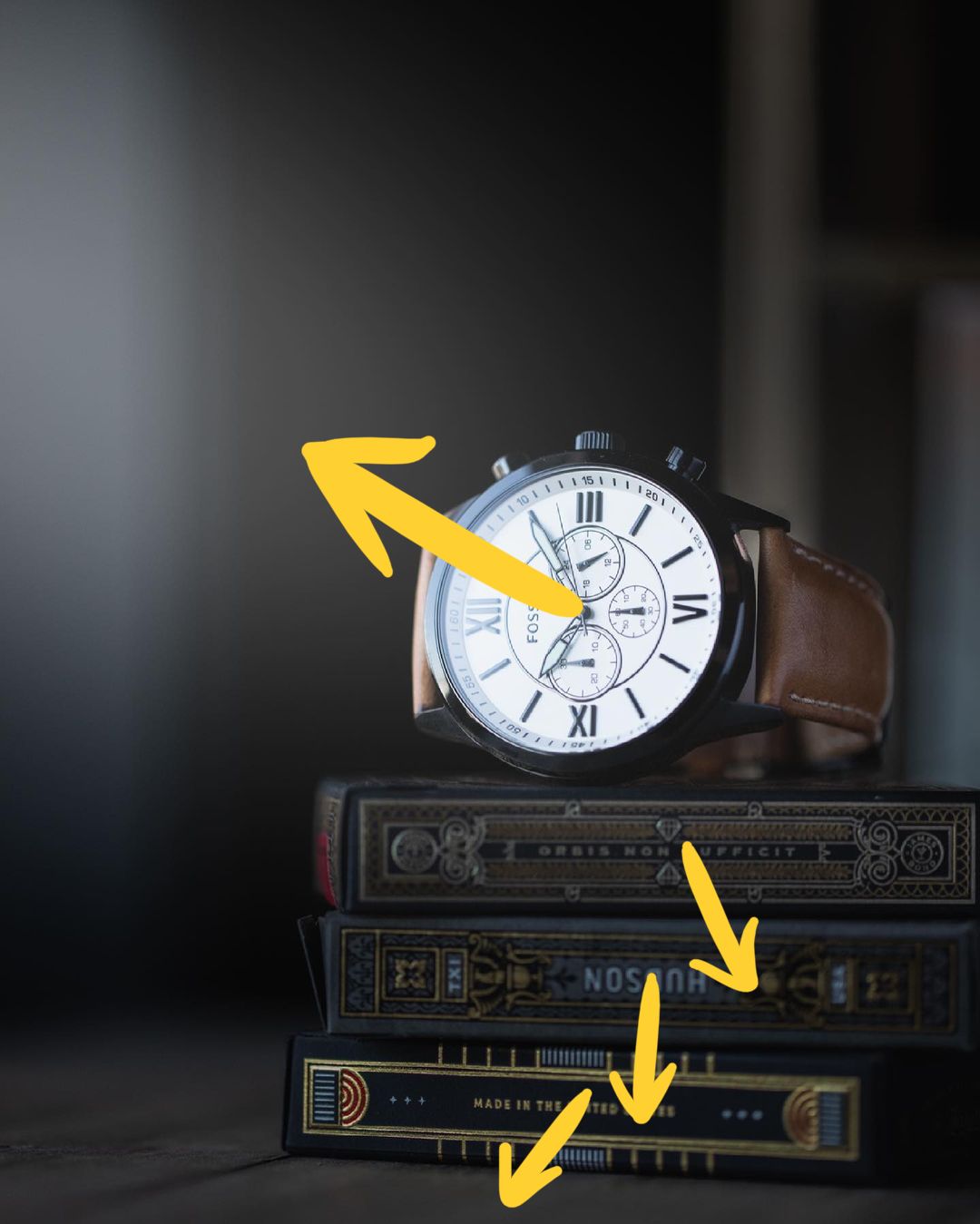I've gone through my career subscribing to the idea that the small things paint the big picture. That is, when you can dial in all the little details to work cohesively toward the same goal, what appears is a single unified story.
Great photos are often filled with little details. One such detail is a concept I call directionality. While it's not necessary for every shot, when directionality is used effectively, it can gracefully strengthen the focal point and unify all the elements to support the story being told.
In today's tutorial, we're going to dissect what directionality means and look at 4 ways it can level up a watch photo. Best of all, all the beautiful examples featured in this tutorial come straight from our community of talented creators. Enjoy!
What is directionality?
Directionality simply describes the visual orientation of elements in a photo. More specifically though, today we're going to look at techniques that leverage the orientation of supporting elements to help guide the eye toward the focal point. Let's dive in!
Leading lines
Let's start with the most well understood and commonly used technique: leading lines. This method uses edges, contours, and sometimes literal lines to drive your attention toward a focal point.
There are countless great examples of this in the community, but I especially love the elegance of using the crack between wood planks in this shot by @m.adcock81.
This shot from @watch_girl_life is probably one of my favorite recent examples of using a prop's natural lines to guide the viewer's focus. It's subtle but incredibly effective. And the concentric and curvy nature of those lines makes them truly hypnotizing in the best way possible.
And for all the wristshot lovers out there, leading lines complement the parrot shot technique incredibly well too. Here's a beautiful example from @thespeedyshutter that uses the zipper and folds of his jacket as leading lines.
Open face
This next technique is one of my favorites to use, especially in a more complex shot that contains a lot of elements. The key to this one is to orient the props so that they subtly face the focal point. Let's take a look at some examples.
Here's a perfect one by @katshoulders that uses the power of directionality by having the camera in the background pointed at the watch.
The table shot is also a style of photo that benefits greatly from directionality. With all the depth and number of props in use, @meandthewatches does a great job gracefully pointing all the props (more cameras!) inwards at the watch.
And here's one last example using the watch community's other favorite prop: alcohol! By pointing the wine bottle labels toward the watch, @ladieswrist is implicitly telling our brains where to look. Yum.
Implied motion
Capturing motion in still photography is a powerful way to bring a photo to life. Even though the motion is implicit, there's often a very clear sense of direction being communicated.
The reach is probably one of the most common patterns we see in watch photos. It's simple to achieve, adds a relatable human touch to the shot, and even makes the shot feel more dramatic. More importantly, it guides the eye toward the object the hand is reaching for, like in this shot by @erinsedc.
The technique works just as well from a different perspective too. In this shot, @onceuponatimepiece uses a first person perspective to show the hand reaching down toward the watch. The extra depth adds some dimensionality to the shot too.
And lastly, here's a wonderful example that goes against the grain a bit. In this beautifully shot scene by @willbethelastwatch, the bubbles are all floating upwards to the surface. But the volume of all the bubbles moving upwards actually tells our eyes to look down toward the source (the watch). Our brains work in weird ways.
Complementary angles
One of my recent obsessions is looking at complementary angles in photography. This one is a little different from the previous three techniques in that it's not about lines and shapes that lead the eye toward the focal point, but instead about directionality that brings balance and harmony to a shot. Let's look at some examples of what I mean.
Here's a beautiful shot by the one and only @tiffywade. At first glance, it's a relatively simple shot to execute. But upon closer inspection, the intentionality reveals itself in the positioning of the watch and the blue line that crosses in front of it.
The watch could have been placed in any position, but in this exact orientation, the direction of the watch and the line creates a very balanced intersection (almost a perfect 90 degrees!).
My good friend @average_guy_horology put this concept to good use recently too. Hard to spot at first, but the brilliance of the shot comes from the direction of the coffee beans and watch counter-balanced against the direction of the wood grain on the surface. Talk about small details!
And finally, another example of complementary angles that I refuse to believe was a happy accident. Here, @caffeinatedpirate uses a twisted stack of playing card boxes to complement the direction the watch is facing. In any other arrangement, this shot would be, at best, less interesting, or at worst, filled with visual tension.
Your turn!
Let's see what you can create by incorporating directionality into your watch photography! The key is to be intentional about all the little details to ensure they add up to the big picture you want. Don't forget to tag your results with #watchstudies!
Thank you for tuning in to this week's Sunday Study Club! I can't wait to see what you'll create next! 🙌
PS: If you've made it this far, drop a ➡️ in the comments of this post to let me know!












